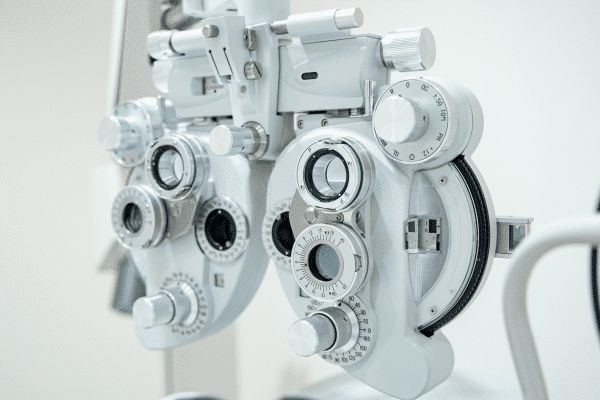Corneal cone is a disease that can make everyday life very difficult - making it difficult or even impossible to read, drive a car, use electronic devices. The condition can be so onerous for the patient that it is sometimes even the basis for a temporary disability pension.
Corneal cone is a fairly common condition whose causes are not fully understood, although scientists speculate that it may have a genetic basis. Characteristic symptoms of the cone are a significant deterioration of vision, blurring of the sharpness of images near light sources (the so-called halo effect) and monocular polyopia, or multiple vision. We can talk about polyopia when, looking at a dark spot on a bright background, we do not see a single, clear image, but several overlapping, irregularly scattered shapes.
With corneal deformation occurring in both eyes, vision deterioration can make daily life much more difficult - causing problems with reading and writing, operating a computer or driving a car. Trouble with vision may worsen after dark.
Corneal cone and driving license
Although a corneal cone is not a condition that prevents one from receiving a driver's license, the driver must, of course, correct the image distortion and control the cone. After successfully passing the driving test, the documents will state that the driver has a visual impairment, as well as whether he or she must, for example, wear glasses, contact lenses, safety glasses, etc. A limited-validity driver's license is issued for those with an identified visual impairment. Depending on the defect, this period ranges from one to 10 years.
Corneal cone and disability
Sometimes patients diagnosed with corneal cone seek disability determination. A corneal cone can be the basis for granting a patient temporary disability pension when the deterioration of vision makes it impossible to function normally and perform the duties of one's job. Although Social Security disability examiners sometimes question the corneal cone as the basis for a disability rating, a negative decision is worth appealing. In 2015, the Regional Court in Bydgoszcz awarded the man a pension for temporary disability for more than two years caused by corneal cone. At the time, the man was undergoing diagnosis and treatment for the disease.
Of course, corneal cone needs to be treated - depending on the severity of the disease, treatment of corneal cone can be conservative or surgical.

